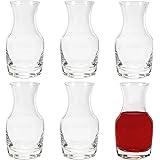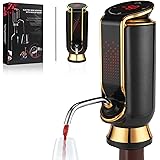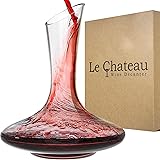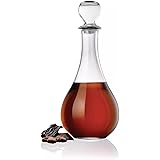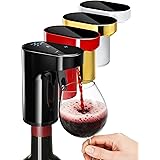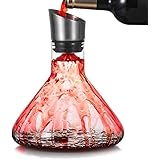Exploring Bordeaux: The Quintessence of French Wine Excellence
There are moments in life when a particular aroma or a specific taste can transport you, evoking memories of shared meals, celebratory toasts, or simply quiet contemplation. For many wine enthusiasts, such a profound connection is often forged with the wines of Bordeaux, France. As highlighted in the accompanying video, this iconic region truly stands as a titan in the world of winemaking, celebrated globally for its magnificent red wine blends.
Indeed, Bordeaux is not merely a place on a map; it is a legacy, a standard, and an enduring symbol of quality. Its reputation has been carefully cultivated over centuries, with each generation of winemakers contributing to its rich tapestry. When discussing the best wine regions in the world, Bordeaux is inevitably among the very first mentioned, a testament to its consistent excellence and historical significance.
The Storied Past of Bordeaux Wine
The assertion that Bordeaux has been producing wine for centuries is an understatement; its winemaking heritage stretches back over two millennia. It is believed that grapevines were first introduced to the region by the Romans in the 1st century AD, planting the seeds for what would become a global phenomenon. Significant periods of expansion and refinement were observed during the Roman occupation, establishing initial vineyards.
A pivotal era was the 12th century, when the marriage of Eleanor of Aquitaine to Henry Plantagenet (later King Henry II of England) brought Bordeaux under English rule. During this time, the “Claret” wines of Bordeaux were widely exported to England, fostering a robust trade relationship that greatly influenced the region’s economic and viticultural development. It is understood that English demand for these wines grew steadily, cementing Bordeaux’s international appeal.
Further innovation was observed in the 17th and 18th centuries, particularly with the drainage of the Médoc marshes by Dutch engineers, which created prime vineyard land. This development greatly expanded the area under vine and led to the establishment of many of the famous estates, or châteaux, that exist today. It is widely acknowledged that these engineering feats were crucial in shaping the modern Bordeaux landscape.
Understanding Bordeaux’s Unique Terroir and Geography
The magic of Bordeaux wine is inextricably linked to its unique terroir, a French term encompassing soil, climate, and topography. Situated in southwestern France, along the Gironde estuary and its two major rivers, the Garonne and the Dordogne, the region benefits from a moderate maritime climate. This climate is characterized by sufficient rainfall, warm summers, and mild winters, conditions which are considered ideal for grape cultivation.
The geological diversity of Bordeaux is also key to its distinct wine styles. The region is often divided into two primary areas by the Gironde estuary: the Left Bank and the Right Bank. On the Left Bank, the soils are predominantly gravelly, which are well-drained and retain heat effectively, benefiting grapes that require more warmth to ripen fully. Conversely, the Right Bank is characterized by clay and limestone soils, which retain water more efficiently, providing sustenance to vines during drier periods.
It is estimated that the Bordeaux vineyard covers more than 110,000 hectares, making it one of the largest wine-producing areas in France. The region’s consistent climate patterns, albeit with vintage variations, contribute significantly to the reliable quality for which Bordeaux wines are celebrated globally. Furthermore, the extensive network of rivers and estuaries is considered to play a moderating role on temperatures, protecting vines from extreme conditions.
The Core Grape Varieties: Architects of Bordeaux Blends
As mentioned, Bordeaux is predominantly known for its red wine blends. The blending tradition is not merely a choice but a necessity, allowing winemakers to mitigate vintage variations and create more complex, balanced, and age-worthy wines. The principal red grape varieties are Cabernet Sauvignon, Merlot, and Cabernet Franc, with smaller amounts of Petit Verdot and Malbec also being utilized.
Cabernet Sauvignon
On the Left Bank, particularly in appellations like Pauillac, Margaux, and Saint-Estèphe, Cabernet Sauvignon is the dominant grape. It is understood that this grape thrives on the gravelly soils of the Médoc, where it ripens fully. Wines made with a high proportion of Cabernet Sauvignon are typically characterized by firm tannins, high acidity, and notes of blackcurrant, cedar, and tobacco. These wines are often known for their exceptional aging potential, developing layers of complexity over decades.
Merlot
Conversely, on the Right Bank, in regions such as Saint-Émilion and Pomerol, Merlot reigns supreme. This grape prefers the cooler, clay-rich soils, where it can achieve optimal ripeness. Merlot-dominant wines are generally softer, more rounded, and fruitier than their Cabernet Sauvignon counterparts. They often exhibit flavors of plum, cherry, and chocolate, and are typically approachable earlier, though premium examples can also age beautifully.
Cabernet Franc
Cabernet Franc serves as an important blending partner on both banks, though it is often given greater prominence in Right Bank blends. This grape contributes aromatic complexity, offering notes of raspberry, violet, and a distinctive herbaceous or pencil-shaving character. It is valued for its ability to add elegance and freshness to the final blend, especially in vintages where the primary grapes might lack certain qualities.
Petit Verdot and Malbec
Petit Verdot is a minor but significant grape primarily used in Left Bank blends, contributing color, tannin, and exotic spice notes. It is known for its intense character but requires a very warm growing season to ripen fully. Malbec, once more prominent, is now used sparingly, mostly in specific Right Bank blends, adding dark fruit and structure. Both are considered valuable for their ability to add unique dimensions to a blend.
Left Bank vs. Right Bank: A Tale of Two Terroirs
The distinction between Bordeaux’s Left Bank and Right Bank is fundamental to understanding its wines. This division is not merely geographical; it dictates the dominant grape varieties, soil types, and resulting wine styles. It is often cited that the Gironde estuary acts as a natural separator, influencing everything from viticulture to vinification.
On the Left Bank, which includes prestigious appellations like Médoc (with its sub-regions such as Pauillac, Margaux, Saint-Julien, and Saint-Estèphe) and Graves (Pessac-Léognan), Cabernet Sauvignon is the king. The gravelly soils are believed to stress the vines appropriately, encouraging deep root systems and concentrated fruit. Wines from this side are typically more structured, tannic, and require significant aging to reach their full potential. It is generally observed that these wines are the epitome of elegance and power.
The Right Bank, encompassing renowned areas like Saint-Émilion and Pomerol, sees Merlot take center stage, often blended with a substantial proportion of Cabernet Franc. The clay and limestone soils of this region are considered ideal for Merlot, resulting in wines that are generally softer, more opulent, and have a plush texture. These wines are often described as being more approachable in their youth, though their complexity can also deepen with age. Research indicates that the specific soil compositions greatly influence the expressive fruit characteristics found in Right Bank wines.
The Illustrious Bordeaux Classification Systems
A discussion of Bordeaux would be incomplete without acknowledging its famed classification systems, which have shaped its reputation and market for centuries. The most famous is the 1855 Classification of Médoc and Graves, created for the Exposition Universelle de Paris. It is widely acknowledged that this system ranked the wines of the Médoc and Sauternes into five Crus (growths) based on their market price and perceived quality at the time.
This classification, though nearly 170 years old, remains largely intact, with only one major change (Château Mouton Rothschild’s promotion to First Growth in 1973). It lists estates from First Growth (Premier Cru Classé) to Fifth Growth (Cinquième Cru Classé), symbolizing the pinnacle of quality and prestige. It is understood that these classified growths command the highest prices and are among the most sought-after wines globally.
Other significant classifications include the Classification of Saint-Émilion, which is revised approximately every ten years, allowing for greater dynamism. This system includes Premier Grand Cru Classé (A and B) and Grand Cru Classé. Furthermore, the Graves region has its own classification (1959), and the Cru Bourgeois system offers a regularly updated classification for Médoc wines that are not part of the 1855 list, providing an indication of quality for a broader range of estates. These systems are considered vital tools for consumers navigating the vastness of Bordeaux wine.
Bordeaux Wine Styles and Food Pairings
The diverse range of red Bordeaux wines offers an unparalleled spectrum of flavors and textures, making them incredibly versatile for food pairing. The structure and acidity common in these wines allow them to stand up to rich and savory dishes effectively. It is generally accepted that the robust tannins found in many Bordeaux reds are softened beautifully by protein and fat.
For a classic Left Bank Bordeaux, with its higher Cabernet Sauvignon content, pairings with roasted red meats like lamb, beef Wellington, or prime rib are traditional and highly recommended. The firm tannins are effectively mitigated by the fat in these dishes, and the wine’s acidity cuts through richness. Studies have shown that the savory umami notes in red meats enhance the fruit flavors of the wine.
Right Bank Bordeaux, with its softer Merlot character, often pairs wonderfully with more subtly flavored dishes. Options include roasted chicken, duck confit, mushroom-based dishes, or even rich pasta dishes. The wine’s plush fruit and gentler tannins are often found to complement these foods without overwhelming them. Furthermore, aged Bordeaux, regardless of bank, is considered excellent with truffle-infused dishes or mature hard cheeses, where its complex tertiary aromas can truly shine.
While red blends are the most celebrated, it is also worth noting that Bordeaux produces significant quantities of dry white wines (made primarily from Sauvignon Blanc and Sémillon) and the world-renowned sweet wines of Sauternes. These offerings further showcase the region’s versatility, proving that Bordeaux is truly a multifaceted jewel in the crown of global viticulture.


